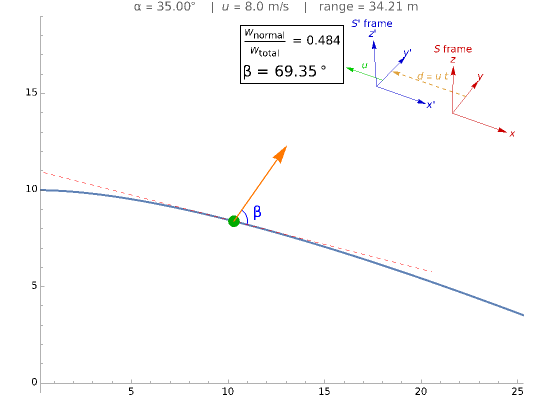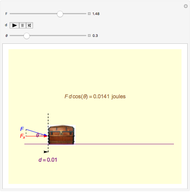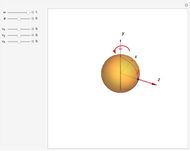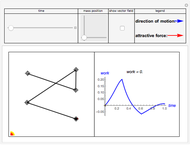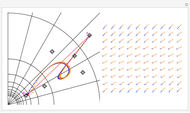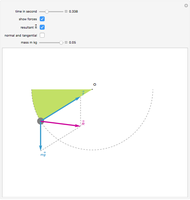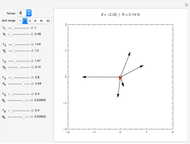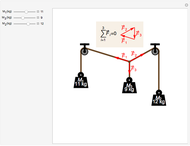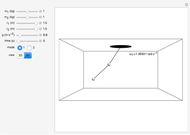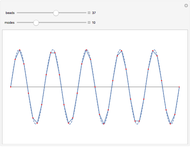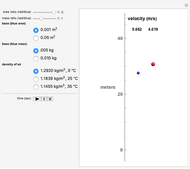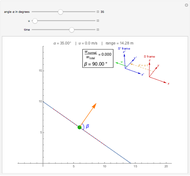Normal Forces Can Do Work

Requires a Wolfram Notebook System
Interact on desktop, mobile and cloud with the free Wolfram Player or other Wolfram Language products.
This Demonstration illustrates the fact that a normal force can do work in moving reference frames. A system consisting of a block sliding on a wedge at angle  is seen in an inertial reference frame
is seen in an inertial reference frame  that moves to the left with speed
that moves to the left with speed  with respect to the reference frame
with respect to the reference frame  in which the block and the wedge are at rest. In
in which the block and the wedge are at rest. In  the normal force is not perpendicular to the trajectory and thus does work. Only in the case of
the normal force is not perpendicular to the trajectory and thus does work. Only in the case of  , when the normal force is perpendicular to the trajectory, does the work vanish.
, when the normal force is perpendicular to the trajectory, does the work vanish.
Contributed by: Diego A. Manjarres G., Rodolfo A. Diaz S., and William J. Herrera (March 2011)
Open content licensed under CC BY-NC-SA
Snapshots
Details
This problem shows that the work done by a force depends on the reference frame, and consequently its associated potential energy (if any). When the reference frame changes, some work associated with forces that do no work in the initial frame can appear; in the Galilean case this work is easily evaluated from the net impulse.
It is possible to show the expected Galilean covariance of the work and energy theorem. In the more general case of noninertial translational reference frames, the form of the theorem is preserved as long as the fictitious work is included. Additionally, in the center of mass system the total fictitious work vanishes, even if such a system is noninertial.
For more information, see:
R. A. Diaz, W. J. Herrera, and D. A. Manjarres, "Work and Energy in Inertial and Noninertial Reference Frames," American Journal of Physics, 77(3), 2009 pp. 270–273.
Permanent Citation
"Normal Forces Can Do Work"
http://demonstrations.wolfram.com/NormalForcesCanDoWork/
Wolfram Demonstrations Project
Published: March 7 2011
